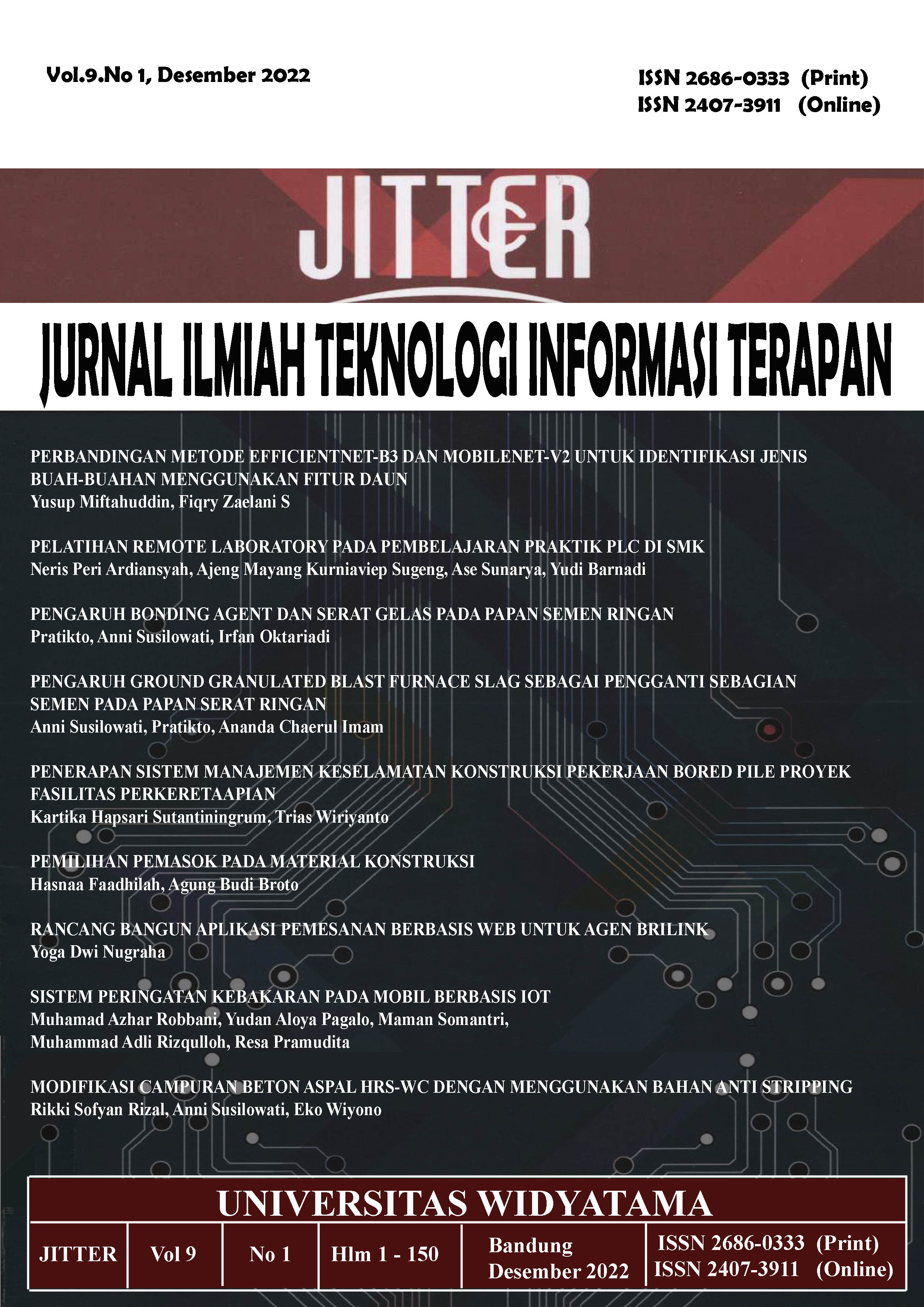Penerapan Sistem Pengelolaan Sampah Anorganik Berbasis Digital (TEMAN UBAH) di Kelurahan Margasari
DOI:
https://doi.org/10.33197/jitter.vol9.iss1.2022.956Keywords:
Teman Ubah, Widyatama University, PPK Ormawa, Margasari Village, Shining Waste Bank, Inorganic WasteAbstract
Garbage is one of the many issues confronting Indonesia. Waste emergency education is one type of solution planned to make residents aware of the importance of waste management. Waste emergency counseling activities are useful for every citizen to gain an understanding of the correct sorting of organic and inorganic waste. In the future, this understanding will become a source of information for every citizen managing and sorting their own household waste. The waste emergency that is happening in Indonesia is not primarily about residents who don't want to manage the waste, but about the fact that they have not been properly educated on how to manage the waste properly and correctly. Therefore, emergency education activities must be conveyed to many residents so that the volume of waste can be reduced over time. This counseling activity is described in this article, where the "TEMAN UBAH" team of Widyatama University students conducted a stretch of digital inorganic waste management for the residents of Margasari Village. The "TEMAN UBAH" team also aims to reduce the volume of inorganic waste in the Margasari Village environment.
Downloads
Downloads
Published
How to Cite
Issue
Section
License
Copyright (c) 2022 Asep Winarto Nainggolan, Winna Miftahuljanah, Vira Luthfiati Az-Zahra, Verani Hartati

This work is licensed under a Creative Commons Attribution-NonCommercial-ShareAlike 4.0 International License.
Submission of a manuscript implies that the submitted work has not been published before (except as part of a thesis or report, or abstract); that it is not under consideration for publication elsewhere; that its publication has been approved by all co-authors. If and when the manuscript is accepted for publication, the author(s) still hold the copyright and retain publishing rights without restrictions. Authors or others are allowed to multiply the article as long as not for commercial purposes. For the new invention, authors are suggested to manage its patent before published. The license type is CC-BY-SA 4.0.




.png)
.png)













.png)


